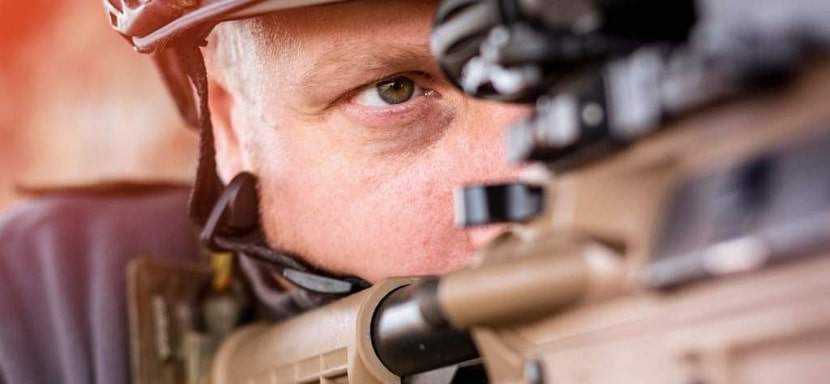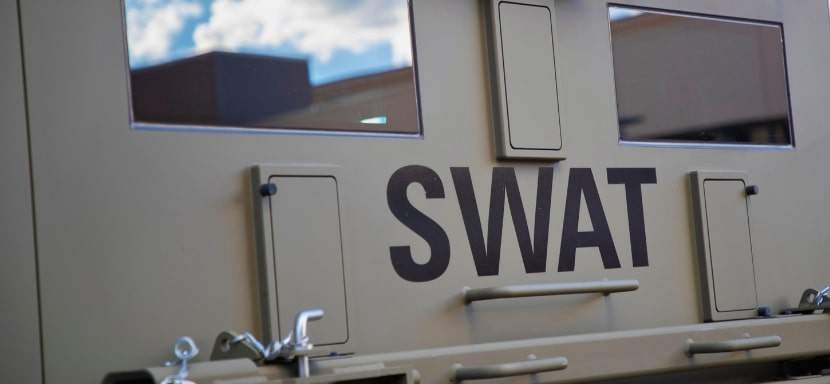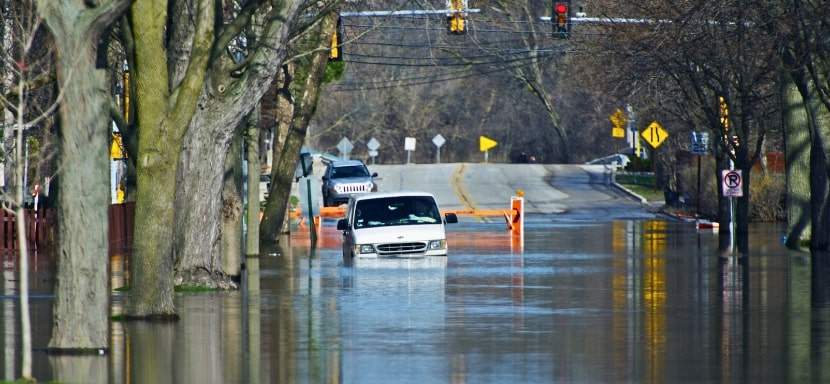How to Survive an Active Shooter

Surviving an Active Shooter: Tips for Staying Safe in Crisis Situations
Maintaining a calm and focused mindset is essential in an active shooter situation. The actions you take can mean the difference between life and death.
As the threat of active shooter incidents continues to rise, being prepared is more important than ever. Surviving an active shooter situation demands swift decision-making and the ability to respond effectively to protect yourself and others.
What is an Active Shooter?
An active shooter is an individual who is actively engaged in killing or attempting to kill people in a populated area.
This term typically refers to situations where the shooter’s actions are ongoing and may pose an immediate threat to the safety of others.
Active shooter incidents often occur suddenly and unpredictably, and they can take place in various settings such as schools, workplaces, shopping malls, or other public spaces.
Understanding Active Shooter Psychology
Understanding the psychology behind active shooters is crucial in developing effective strategies for anticipating and responding to threats. By delving into the mindset and behavior of individuals who carry out these attacks, we can gain valuable insights that help us identify warning signs, assess risk factors, and implement proactive measures to prevent tragedies.
One aspect of active shooter psychology is the complex interplay of factors that may contribute to an individual’s decision to engage in such violent acts. This can include personal grievances, perceived injustices, feelings of isolation or rejection, and a desire for power or recognition.
Furthermore, studying the behavioral patterns and characteristics common among active shooters can help us recognize potential warning signs and indicators of impending violence. These may include a history of aggression or violence, fascination with firearms or weaponry, social withdrawal, expressions of hostility or resentment, and a fixation on past grievances or perceived injustices.
Tips for Surviving an Active Shooter Attack
In a critical situation like an active shooter scenario, quick thinking and decisive action can mean the difference between life and death. You have three choices: RUN, HIDE, or FIGHT.
Here’s what you need to do if you’re in an active shooter scenario:
RUN
- Evacuate Immediately: If there’s a clear path to safety, get out as fast as possible.
- Plan Your Escape: Always have an exit strategy in mind wherever you go.
- Take Charge: Don’t wait for others to move; your safety comes first.
- Leave Your Belongings: Your life is more valuable than any possessions.
- Keep Hands Visible: Show that you’re not a threat by keeping your hands empty and visible.
- Help Others: Assist those who may need help evacuating.
- Control Access: Prevent others from entering areas where the shooter may be.
- Call for Help: Dial 911 when you’re in a safe location to report the incident.
HIDE
- Find Cover: If you can’t escape, hide and barricade yourself.
- Stay Out of Sight: Choose a location that’s not easily visible to the shooter.
- Secure the Door: Lock it and use heavy objects to block entry.
- Stay Low: Hide behind sturdy objects away from windows and doors.
- Stay Silent: Turn off lights, silence your phone, and keep quiet to avoid detection.
- Maintain Contact: Call 911 if it’s safe to do so and stay on the line even if you can’t speak.
FIGHT
- Last Resort: Only fight if your life is in immediate danger and you have no other options.
- Act Aggressively: Use any means necessary to incapacitate the shooter.
- Use Whatever’s Available: Throw objects, use improvised weapons, and yell to disorient the shooter.
- Stay Committed: Once you decide to fight, give it your all until the threat is neutralized.
When Law Enforcement Arrives on the Scene
- Stay Calm: Follow instructions calmly and precisely.
- Cooperate Fully: Keep your hands visible and follow commands without hesitation.
- Avoid Sudden Movements: Don’t do anything that may be mistaken for aggression.
- Don’t Interfere: Let law enforcement do their job without hindrance.
- Evacuate Safely: Move in the direction indicated by officers to reach safety.
Active Shooter Survival Tips
Stay safe and prepared with these essential active shooter survival tips. Learn to anticipate threats, respond effectively, and protect yourself and others during an emergency.
Have a Plan
Developing an emergency response plan is essential for individuals, families, and organizations to respond to an active shooter situation effectively.
Here’s some advice on what you can do to create a comprehensive plan:
- Conduct a Threat Assessment: Start by assessing potential threats and vulnerabilities in your environment. Identify areas of concern, such as access points, potential hiding spots for shooters, and escape routes. Consider factors such as building layout, security measures in place, and previous incidents in the area.
- Establish Communication Protocols: Establish clear communication channels and protocols for disseminating information during an active shooter incident. Determine how you will alert others to the threat, whether through verbal cues, alarm systems, or mobile phone notifications. Ensure everyone knows how to report suspicious activity and communicate with emergency responders.
- Develop Evacuation Procedures: Create evacuation plans that outline escape routes and assembly points in an active shooter situation. Designate primary and secondary evacuation routes for different scenarios and ensure that everyone knows how to access them safely. Practice evacuation drills regularly to familiarize individuals with the procedures and reinforce their effectiveness.
- Implement Shelter-in-Place Protocols: In situations where evacuation is not possible or advisable, establish shelter-in-place protocols to protect individuals from harm. Identify secure locations within buildings where occupants can seek refuge and fortify these areas with additional security measures such as locking doors and barricading entry points. Train individuals to secure their location and remain hidden until help arrives.
- Provide Training and Education: Educate individuals on recognizing the warning signs of potential violence and responding appropriately to an active shooter threat. Offer training sessions and workshops covering situational awareness, de-escalation techniques, and self-defense strategies. Empower individuals to take proactive measures to protect themselves and others in dangerous situations.
- Coordinate with Law Enforcement: Establish partnerships with local law enforcement agencies and coordinate response efforts to active shooter incidents. Collaborate on developing joint response plans, sharing information on potential threats, and conducting training exercises together. Foster open lines of communication to facilitate rapid and effective coordination during emergencies.
- Review and Update Regularly: Review and update your emergency response plan to reflect changes in your environment, personnel, and security posture. Conduct periodic drills and exercises to test your plan’s effectiveness and identify improvement areas. Solicit participant feedback and incorporate lessons learned into plan revisions.
Did You Know?
Did you know that most active shooter incidents occur in locations where people regularly go about their daily lives, such as workplaces, schools, and shopping centers? These attacks can happen anywhere, highlighting the importance of being vigilant and always prepared.
Recognizing Warning Signs
Recognizing warning signs is crucial for identifying potential threats and taking proactive measures to prevent harm during an active shooter incident.
Here are some tips on what you can do:
- Stay Informed: Educate yourself about common indicators and behaviors associated with potential active shooters. This includes studying behavior patterns, past incidents, and warning signs that may precede an attack.
- Trust Your Instincts: Pay attention to your instincts and gut feelings. If something seems off or suspicious, don’t ignore it. Trust your intuition and take appropriate action, such as reporting your concerns to authorities or seeking assistance from trusted individuals.
- Be Vigilant: Stay observant of your surroundings and be mindful of any unusual or suspicious behavior exhibited by others. This includes paying attention to verbal threats, aggressive actions, or signs of distress that may indicate a potential threat.
- Report Concerns: If you notice any warning signs or suspicious behavior, don’t hesitate to report it to the appropriate authorities. This could include contacting law enforcement, security personnel, or mental health professionals who can assess the situation and take necessary action.
- Take Threats Seriously: Always take threats of violence seriously, whether they are made verbally, online, or through other means. Err on the side of caution and report any threats immediately to ensure they are addressed promptly and effectively.
- Encourage Open Communication: Foster a culture of open communication and awareness within your community or organization. Encourage individuals to speak up if they notice any concerning behavior or potential threats, and ensure that reporting channels are accessible and well-publicized.
- Practice Situational Awareness: Stay alert and practice situational awareness in all environments, including public spaces, workplaces, and educational institutions. Be mindful of exit routes, safe areas, and potential barricades that could be used in the event of an emergency.
Recognizing warning signs and taking proactive steps to address potential threats can play a vital role in preventing and mitigating the risk of an active shooter incident.
Active Shooter Preparedness Training
Preparing for an active shooter situation isn’t just about having a plan; it’s about knowing how to execute it when it matters most.
Here’s how you can enhance your readiness through practical training exercises and drills:
- Simulate Real Scenarios: Engage in realistic training exercises that replicate the chaos and stress of an active shooter event.
- Practice Response Tactics: Train individuals and groups on how to respond effectively, whether running, hiding, or fighting.
- Enhance Decision-Making: Provide opportunities for participants to make split-second decisions under pressure, helping them develop critical thinking skills.
- Foster Teamwork: Encourage teamwork and collaboration among participants to coordinate responses and support each other during an emergency.
- Build Confidence: Through repeated drills and exercises, individuals gain confidence to react quickly and decisively in a crisis.
- Evaluate and Improve: Use training sessions to identify weaknesses and areas for improvement in your emergency response plans.
- Stay Current: Keep training materials and scenarios up-to-date to reflect evolving threats and best practices in active shooter response.

Securing Your Environment
Ensuring the safety of your environment is paramount when it comes to protecting against the threat of an active shooter.
Here are some strategies to enhance security measures in schools, workplaces, and public spaces:
- Assess Vulnerabilities: Conduct a comprehensive assessment of your environment to identify potential weaknesses and areas of vulnerability.
- Implement Access Controls: Limit access points and implement security measures such as critical card entry systems or security guards to monitor and control entry into the premises.
- Enhance Surveillance: Install cameras in strategic locations to monitor activity and provide real-time monitoring of potential threats.
- Train Staff and Personnel: Provide training to staff and personnel on recognizing suspicious behavior, responding to emergencies, and implementing lockdown procedures.
- Establish Communication Protocols: Develop clear communication protocols for alerting authorities and notifying occupants in an active shooter situation.
- Invest in Physical Security Measures: Consider installing bulletproof glass, reinforced doors, and other physical barriers to deter and delay potential attackers.
- Promote Awareness and Vigilance: Encourage awareness and vigilance among occupants, empowering them to report any concerns or suspicious activity.
- Conduct Drills and Exercises: Regularly conduct active shooter drills and exercises to familiarize occupants with emergency procedures and improve response times.
- Collaborate with Law Enforcement: Establish partnerships with local agencies to coordinate response plans and share intelligence on potential threats.
- Stay Updated on Best Practices: Stay informed about evolving best practices and recommendations for active shooter preparedness and security measures.
Communication Strategies
When faced with an active shooter incident, effective communication can save lives.
Here are some useful tips to ensure clear and timely communication during a crisis:
- Stay Calm and Composed: In moments of crisis, it’s essential to remain calm and composed. Take deep breaths and focus on assessing the situation.
- Use Clear and Concise Language: When alerting others or seeking help, use clear and concise language to convey your message. Avoid unnecessary details and focus on providing essential information.
- Utilize Emergency Communication Tools: Take advantage of emergency communication tools such as text alerts, phone calls, or intercom systems to notify others about the situation.
- Establish Communication Channels: Identify designated communication channels for different scenarios, such as notifying building occupants, contacting law enforcement, or updating emergency responders.
- Follow Established Protocols: Adhere to established communication protocols and procedures in your organization’s emergency response plan. This ensures consistency and efficiency in conveying critical information.
- Provide Relevant Details: When communicating with law enforcement or emergency responders, provide relevant details such as the shooter’s location, the number of individuals involved, and any injuries sustained.
- Stay informed about the latest developments and updates from authoritative sources, such as law enforcement agencies or emergency management officials. This helps you make informed decisions and respond appropriately to changing circumstances.
- Support Others: Offer support and assistance to those around you who may be distressed or need help. Encourage cooperation and collaboration to ensure everyone’s safety.
- Maintain Open Lines of Communication: Keep communication lines open with law enforcement and emergency responders, providing necessary updates and information to facilitate their response efforts.
- Follow Instructions: Follow instructions from law enforcement and emergency responders promptly and without hesitation. Your cooperation is essential in ensuring a coordinated and effective response to the active shooter incident.
Survival Mindset and Tactics
In a life-threatening situation like an active shooter, having the right mindset and tactics can make all the difference.
Here are some expert tips to cultivate a survival mindset and empower individuals to take decisive action:
- Stay Calm and Focused: The first step in surviving any crisis is to remain calm and focused. Take deep breaths and mentally prepare to assess the situation and act.
- Visualize Success: Visualize yourself successfully navigating the situation and overcoming obstacles. Positive visualization can help boost confidence and resilience in the face of adversity.
- Adaptability and Flexibility: Be prepared to adapt to changing circumstances and adjust your tactics accordingly. Flexibility is critical to staying one step ahead of the threat.
- Utilize Cover and Concealment: When confronted with an active shooter, seek cover and concealment to protect yourself from harm. Use solid objects like walls, furniture, or fixtures to shield yourself from gunfire.
- Maintain Situational Awareness: Stay aware of your surroundings and the shooter’s movements. Pay attention to exits, obstacles, and potential avenues of escape.
- Practice Tactical Breathing: Use tactical breathing techniques to regulate breathing and manage stress levels. Inhale deeply for a count of four, hold for four, exhale for four, and repeat.
- Focus on Immediate Threats: Prioritize immediate threats and take action to neutralize or evade them. Avoid getting bogged down by distractions or non-essential tasks.
- Trust Your Instincts: Trust your instincts and intuition when making decisions under pressure. Your gut feelings are often a valuable source of information in high-stress situations.
- Support and Encourage Others: Offer support and encouragement to those around you who are struggling or need assistance. Together, you can bolster each other’s resilience and increase your chances of survival.
- Stay Positive and Determined: Maintain a positive attitude and a sense of determination, even in adversity. Focus on taking proactive steps to ensure your safety and the safety of others.
Run. Hide. Fight.
Rapidly assess the most effective means to safeguard your life – whether it’s to run, hide, or fight. Every second is crucial.
First Aid and Medical Response
When faced with the aftermath of an active shooter attack, having basic medical skills and knowledge of emergency first aid procedures can be invaluable in providing immediate assistance to those in need.
Here’s how you can prepare to respond effectively:
- Learn Basic First Aid Techniques: Take a certified first aid training course to gain essential skills such as CPR, wound care, and managing bleeding.
- Practice Triage: Understand how to prioritize treatment based on the severity of injuries, focusing on life-threatening conditions first.
- Carry a First Aid Kit: Equip yourself with a well-stocked kit containing essential supplies like bandages, gauze, antiseptic wipes, and tourniquets.
- Stay Calm and Focused: Maintain a composed demeanor to assess the situation and provide assistance efficiently.
- Communicate Effectively: Coordinate with others to assess the needs of victims and relay accurate information to emergency responders.
- Provide Emotional Support: Offer reassurance and comfort to those injured or distressed, promoting safety and calm amid chaos.

Active Shooter Post-Traumatic Stress Management
Experiencing or witnessing an active shooter incident can leave profound emotional scars, making it crucial to have effective coping strategies in place for managing post-traumatic stress.
Here are some concise tips and advice:
Firstly, prioritize self-care by engaging in activities that promote relaxation and well-being, such as exercise, meditation, or spending time with loved ones. Establishing a routine can provide stability and a sense of control in the aftermath of a traumatic event.
Seek professional help if needed. Don’t hesitate to reach out to mental health professionals, such as therapists or counselors, who specialize in trauma-related issues. They can offer invaluable support, guidance, and specialized treatments like cognitive-behavioral therapy to address symptoms of post-traumatic stress disorder (PTSD).
Connect with support networks. Surround yourself with understanding and empathetic individuals who can offer a listening ear and emotional support. Consider joining support groups or online communities for survivors of trauma to find camaraderie and validation of your experiences.
Practice mindfulness and grounding techniques. Techniques such as deep breathing, mindfulness meditation, or grounding exercises can help anchor you in the present moment and alleviate feelings of anxiety or distress.
Limit exposure to triggering stimuli. While it’s important to acknowledge and process your emotions, avoid repeatedly exposing yourself to news coverage or reminders of the traumatic event, as this can exacerbate feelings of fear and anxiety.
Engage in creative outlets. Expressing yourself through creative activities like writing, art, or music can be therapeutic and help you healthily process your emotions.
Remember that healing takes time. Be patient and allow yourself to grieve and heal at your own pace. It’s okay to experience a range of emotions, and healing isn’t linear; there will be ups and downs.
Lastly, know that you’re not alone. Contact friends, family, or support organizations for assistance and guidance. With time, support, and self-care, it’s possible to navigate the challenges of post-traumatic stress and emerge more robust and resilient.
Community Resilience and Support
To bolster community resilience and support in the face of active shooter threats, fostering collaboration among various stakeholders, including community members, law enforcement agencies, schools, and businesses, is essential. By working together effectively, communities can develop comprehensive strategies to prevent and respond to such incidents.
Additionally, establishing support networks and educational initiatives can empower individuals with the knowledge and resources to recognize warning signs and take appropriate action. Advocating for policies that prioritize public safety is also crucial in creating a safer environment for all.
Moreover, providing resources and assistance to those affected by active shooter incidents is essential for promoting recovery and healing within the community. By promoting inclusivity, diversity, and unity, communities can cultivate a sense of belonging and solidarity, further strengthening their resilience against potential threats.
Through organized community-building activities and ongoing collaboration, communities can enhance their capacity to prevent, respond to, and recover from active shooter events, fostering safer and more resilient neighborhoods for everyone.
Top 10 Deadliest Active Shooter Incidents in History
Here are the top ten deadliest instances of active shooter violence worldwide, from tragic massacres in schools and churches to devastating attacks in public venues, revealing the toll of lives lost and communities shattered by these horrific events.
- Las Vegas shooting (2017) – 60 deaths
- Pulse nightclub shooting, Orlando (2016) – 49 deaths
- Virginia Tech shooting (2007) – 32 deaths
- Sandy Hook Elementary School shooting, Newtown (2012) – 27 deaths
- Sutherland Springs church shooting, Texas (2017) – 26 deaths
- Luby’s shooting, Killeen (1991) – 24 deaths
- Marjory Stoneman Douglas High School shooting, Parkland (2018) – 17 deaths
- Columbine High School massacre, Littleton (1999) – 15 deaths
- University of Texas tower shooting, Austin (1966) – 14 deaths
- San Bernardino attack (2015) – 14 deaths
More Crime & Terror Scenarios
How to Survive a Nightclub Shooting
Nightclubs pulse with life—lights flashing, music pounding, bodies packed tight on the dance floor. It’s a place to…
How to Survive Porch Pirates
If there’s one thing worse than a soggy box on your doorstep, it’s an empty spot where a package should…
How to Survive a Swatting Incident
Imagine the doorbell ringing, and instead of the pizza delivery guy, you see flashing lights, uniformed…
How to Survive a Human Trafficking Situation
Surviving a human trafficking situation takes courage, quick thinking, and sometimes a little luck. It’s not a…
How to Survive Being Stalked
Surviving a stalker is like trying to outrun a persistent mosquito in the middle of the night. No matter how…
Recent Survival Posts
How to Survive a Layoff
Layoffs feel personal—even when they’re not. One day, you’re responding to Slack messages and forwarding…
How to Survive a Drug Test
I never imagined I’d be so emotionally invested in a paper cup. But there I was, standing under the fluorescent…
How to Survive an Interrogation
If you’ve ever been caught in the crosshairs of an overly enthusiastic mall cop or stared down by someone…
How to Survive a Nightclub Shooting
Nightclubs pulse with life—lights flashing, music pounding, bodies packed tight on the dance floor. It’s a place to…
How to Survive a Bachelor Party
A bachelor party is a delicate mix of celebration, chaos, and questionable decision-making, wrapped…
More Crime & Terror Survival Scenarios

How to Survive Porch Pirates
If there's one thing worse than a soggy box on your doorstep, it's an empty spot where a package should be. Porch pirates—the modern-day scourge—are bold thieves who swipe packages left unattended. These petty criminals might seem like a minor nuisance compared to...

How to Survive a Swatting Incident
Imagine the doorbell ringing, and instead of the pizza delivery guy, you see flashing lights, uniformed officers, and weapons drawn. It's a scene nobody wants to star in, yet swatting incidents are becoming more common in today's digital age. A prank to some but a...

How to Survive a Human Trafficking Situation
It’s terrifying even to imagine being trapped in a human trafficking situation. These moments can feel hopeless, and it might seem like no one is coming to help. But the truth is, people have escaped and survived these situations. You can, too. Knowing what to do in...

How to Survive Being Stalked
Surviving a stalker is like trying to outrun a persistent mosquito in the middle of the night. No matter how hard you swat, it keeps coming back. But unlike mosquitoes, a stalker is a serious threat that can turn your life upside down. The good news is that you can...

How to Survive Being Drugged
In an increasingly unpredictable world, knowing how to protect yourself from being drugged is essential. This guide provides practical advice on recognizing the signs of being drugged, immediate steps to take, and long-term strategies for safety. With personal...
More Survival Scenarios

How to Survive a Layoff
When the Floor Falls Out: The Reality of a Layoff Layoffs feel personal—even when they're not. One day, you're responding to Slack messages and forwarding emails. Next, you're staring at your monitor as it logs you out... for good. Whether it's a restructuring, a...

How to Survive a Drug Test
The Cup, The Room, The Truth I never imagined I’d be so emotionally invested in a paper cup. But there I was, standing under the fluorescent hum of a strip-mall clinic, trying to recall the last time I ate a poppy seed bagel. That’s the thing about drug tests—they...

How to Survive an Interrogation
If you've ever been caught in the crosshairs of an overly enthusiastic mall cop or stared down by someone in a uniform with a clipboard and a glare, you’ve felt it — the chilly fingers of interrogation anxiety. And while most of us imagine interrogation scenes as...

How to Survive a Nightclub Shooting
Nightclubs pulse with life—lights flashing, music pounding, bodies packed tight on the dance floor. It’s a place to escape, feel the rhythm, and lose yourself in the crowd. But that same energy can turn deadly in seconds, transforming a night of fun into one of the...

How to Survive a Bachelor Party
A bachelor party is a delicate mix of celebration, chaos, and questionable decision-making, wrapped in the noble intention of sending the groom off into married life with a night he’ll (hopefully) remember. It’s a ritual as old as time—well, as old as men deciding...

How to Survive Your First Time at the Gym
Walking into a gym for the first time can feel like stepping into an alien world. The machines hum with purpose, the regulars move confidently, and you’re left standing there, clutching your water bottle, wondering whether you’re in the right place—or on the right...

How to Survive a Worldwide Communications Breakdown
Imagine waking up to silence. Your phone doesn’t buzz, your email won’t load, and even your local radio station crackles with static. A worldwide communications breakdown has hit. What next? For many, this doomsday scenario may sound like the opening lines of a...

How to Survive a Flash Flood While Driving
Surviving a flash flood while driving requires quick thinking, calmness, and a solid plan to ensure your safety. Preparation can make all the difference between a close call and a catastrophe in emergencies like this. This guide provides practical advice to protect...

How to Build an Emergency Kit
Emergencies don’t knock politely at the door. They barge in, uninvited, like a distant relative with a penchant for drama, turning your world upside down without warning. Whether it’s a power outage, a natural disaster, or an unexpected evacuation, the key to staying...

How to Protect Yourself From Insects in the Wild
There’s nothing like being out in the wild—birdsong echoing through the trees, the fresh scent of earth, and a deep sense of peace that makes you think, “Ah, this is what life is about.” But then comes the buzzing. Mosquitoes, ticks, and flies swoop in like uninvited...
